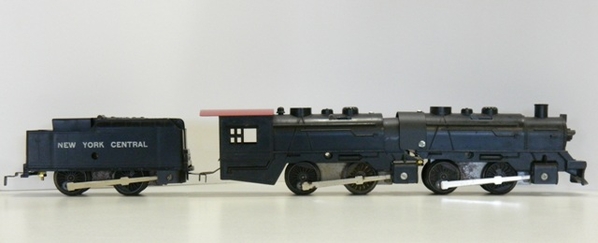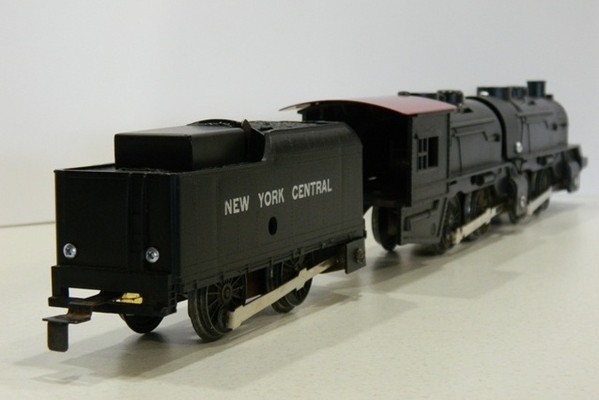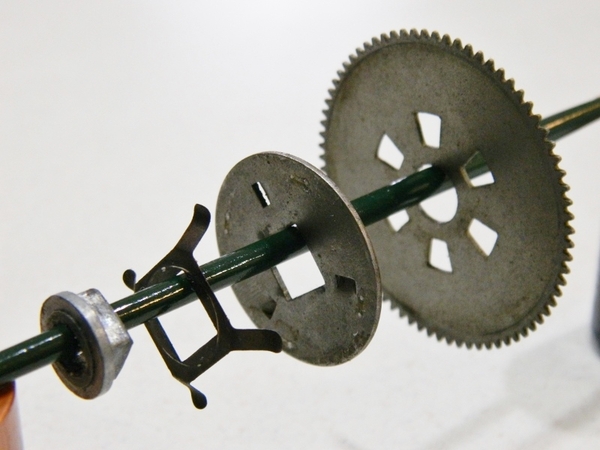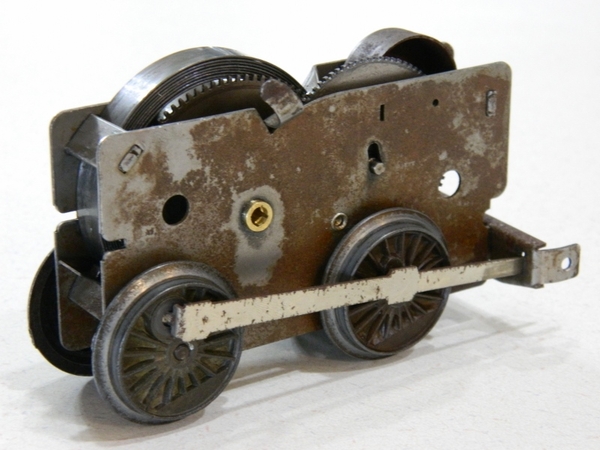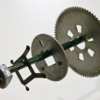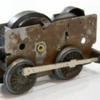Although windup trains are a small niche within the toy train collecting hobby, there are a few of us that like trains powered by springs and even customize or modify them. I'm not as active in the shop as I used to be (thanks to middle age and earning a living) but I thought I would share a few customs that I have done over the years. I would encourage others to share their customized/modified/restored windup locomotives as well.
Let's start with the loco that led to this thread - I posted a picture of it in another thread, and wanted to continue the discussion elsewhere so as not to further derail the original post. This is what I call my #1203 Triplex - it is powered by three Marx windup motors, and is built from two Marx 401 bodies plus a Marx tender body. Yes, the boiler is articulated as inspired by the Santa Fe steamers with the flexible boiler - this allows the loco to go around O27 curves. It's not a scale model, nor is it pretty, it just is what it is:
You can see it in action at 4:23 in the video below:
So, what interesting windup locos do you have? I'll post more from time to time...




